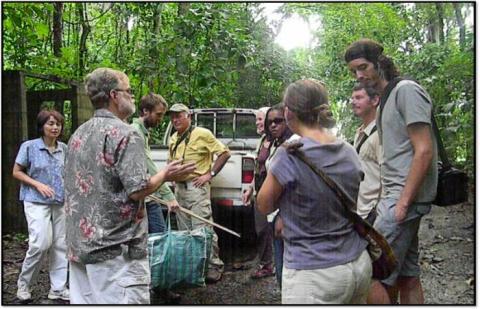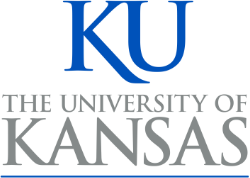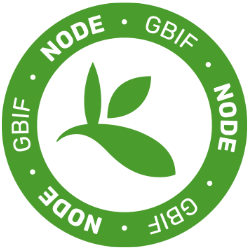
Dr. Bruce MacFadden is Curator of Paleontology at the Florida Museum of Natural History and Director of Education and Outreach for iDigBio. His responsibilities with iDigBio include oversight of educational and outreach activities and their assessment at iDigBio, the TCNs and at other digitization projects involving biological collections. Here, he discusses his early fascination with dinosaurs and paleontology, pivotal experiences in undergraduate and graduate school that helped shape his career, and then some of his professional accomplishments. Bruce is interviewed by Jill Holliday, executive editor of the iDigBio e-newsletter.
Holliday: Let’s start at the beginning. Where were you born?
MacFadden: Albany, N.Y. Then we moved to the suburbs of NYC. I graduated from Port Chester HS outside of NYC, then went to Cornell for undergraduate and then my Masters and PhD at Columbia University.
Holliday: So somewhere along the way you started liking biology and geology?
MacFadden: It was paleontology…I was a little dinosaur kid. I knew all the dinosaurs and said I wanted to be a paleontologist when I grew up.
Holliday: How old were you when you learned your first dinosaurs?
MacFadden: Oh, probably about 4 or 5 years old. And I could spout off the names of Triceratops and others and my mother would take me on the train into the city to go to the American Museum of Natural History and that’s really where I developed my interest in paleontology, with dinosaurs like many little kids.
Holliday: So then you went to Cornell. What was your major?
MacFadden: Well, I was a pre-med student for a while. I had lost my younger interest in paleontology and was pre-med and then I took a general course in Paleontology my junior year, Life of the Past, and I thought “this is really, really cool”, so then I rededicated myself to science. And I was encouraged to do this from my profs at Cornell. For Cornell I was too far along and in the wrong college (Ag. school) to get an undergraduate degree in geology, so I was a general science major and I “minored” in geology/paleontology. I did my senior honors thesis on fossil fishes from New York state, and then I went to the Columbia University/American Museum for a degree in Vertebrate Paleontology (in the geology department). I originally went to study fossil fish with a famous paleoichthyologist named Bob Schaeffer. Then the first summer I was there, my ultimate advisor, Malcolm McKenna, said “You want to go out west?” and I said “Sure.” So I went out west and we went to New Mexico to collect little oriented “paleomagnetic” samples of rocks – oriented to the ancient North and South poles – to find out the reversals of the Earth’s magnetic field in the sediments. The idea was to use the reversal patterns to establish the age of the rocks and the fossils. I thought that was really cool and innovative so I asked McKenna if I could work on that and he was really great and he said “Oh, yeah, sure, I was looking for a student to do this, so go ahead.” So I did this as my dissertation project and my Co-advisor, the famous paleomagnetist, Neil Opdyke, is now an emeritus geology prof here at UF. I was fortunate to have these two profs mentoring me in this hybrid project (paleontology/paleomagnetism).
Holliday: When did you find your first fossil – was it when you went out west?
MacFadden: No, when I was an undergraduate at Cornell I took a course with a famous professor named John Wells. He studied invertebrates – mostly fossil corals – and I had a marvelous course with him called Stratigraphy of New York State. Every weekend we would have a field trip and collect fossils and I had my own collection and I collected a beautiful jaw of a placoderm – a fossil fish from northern Pennsylvania – and I wanted to study that, which I did as part of my senior honors thesis. That’s also what got me interested in graduate school and paleoichthyology. So my first fossils were collected when I was an undergraduate at Cornell. Then at Columbia I started collecting fossil mammals with my advisor and I forgot about fossil fish. And then I started to do geophysics, magnetic stratigraphy (paleomagnetism), and that was really interesting. It was cool because half of my PhD involved fossils and the other paleomagnetism. Although these kinds of integrated projects are commonplace now, they were not in the 1970s when I was a student. I also believe that this helped me get my first job.
Holliday: So where’d you go after the PhD?
MacFadden: My first year I was an instructor at Yale in the geology department, where I taught a graduate course in “Paleontology and Paleomagnetism,” and then a job came up at the Florida Museum of Natural History in the summer of 1977. It was temporary, and the job at Yale was also temporary, but I knew University of Florida had a good paleontology program and a nice museum. I had heard good things so I applied for the job. I started working here in August 1977. The person I was filling in for was on sabbatical – he had gone to law school – and if he had decided to come back then I would have lost my job. So it was a very tenuous position for a year. But he decided to stay in law school and then moved on, so then my position was made tenure track. Its amazing to think that I’ve been here for 35 years.
Holliday: How did you end up getting involved with Education and Outreach? Were you teaching and working as curator at the museum? What was your work breakdown like?
MacFadden: I always liked doing outreach. I always liked dealing with the public, and I like doing exhibits. The exhibits used to be upstairs in Dickinson Hall a long time ago, so I would help upstairs and then the exhibits moved over to the other building – I was chairman of my department at the time – this was 1996 or 1997 – and Doug Jones, the director of the museum, asked if I wanted to stay and be chair of this department or go over and do something new to build up the museum. I like challenges, so I moved over there. I was the 1st Associate Director in charge of developing that new public museum. I oversaw all of the exhibits and all of the programs. There was a lot already in place, but I was in charge of that enterprise for seven years. Then when all the exhibits were built out, I was either going to stay in administration or come back over here and be a professor – a curator - and I decided to come back. So my interest in outreach stems from my interest in working with the other public exhibits at Powell Hall.
Holliday: So that lasted until 2004?
MacFadden: Yes. And along the way I was asked to read grant proposals for NSF in the museum exhibits program and I really liked doing that because it was a different way of thinking. So then in 2008 I was on a panel for NSF for exhibits and the program officer asked if I would like to come and be a rotator at NSF. And things just aligned…my wife had just retired and both of her children lived in Fairfax, Virginia right by NSF and I only had one graduate student at the time. It seemed like if I was going to do it this was the time to do it. It was a program that was out of my comfort zone – I could have easily been a program officer in geology or biology, but to be a program officer in education…I’m not an educator. But I wanted to learn something new and they said fine, we’d like a scientist to ground-truth the STEM in the proposals that we get. I felt like I fit in well there and that I made a difference during my time there. One of the best things that I’ve done in my career was go to NSF for a year.
Holliday: It sounds like you took a lot with you when you left – bigger knowledge base and a better understanding.
MacFadden: Absolutely. When I talk to science educators and they talk about the things they are interested in, I understand where they are coming from because I was in that culture for a year and I got to know how they think. I like talking with educators because for a year I was totally immersed in that way of thinking and that culture. I felt comfortable there and it was a nice change of pace from the regular way of doing science and paleontology.
Holliday: So now you are director of E & O for iDigBio. What are your duties in that role?
MacFadden: I’m involved in the steering committee so I attend monthly meetings. Prospective PIs call me or e-mail me and have questions about outreach or education and how they can craft their proposals based on the HUB and iDigBio initiatives. I’m involved now in an initiative with fossil clubs and how fossil clubs will be interacting with iDigbio specimens on-line (FOSSIL). I’m giving talks to fossil clubs and Austin Hendy, Betty Dunckel, and Shari Ellis are also involved in that project. I’m interested in putting all the fossils in our collections from PCP-PIRE (Panama) into the cloud and Austin is in charge of that as well.
There’s so much to do in E & O in iDigBio that it is impossible to do it myself. So there are other people who are interested and I’m really happy that others are interested. Austin Mast at Florida State University and Betty (Dunckel) recently did a workshop on crowdsourcing and public participation and citizen science – that is really great and I’m glad that is happening. We just don’t have the staff to do all the E & O ourselves. We would need a team as large as the computer team to do it right, where we’d have a K12 person, a museum person, an internet person, a citizen science person, etc.…there is so much that we could do if we had the resources so I’m really glad that the interest is distributed among other people in the TCNs and the other parts of the initiative.
Holliday: So you think that is how it has to be – subdivided and delegated rather than centralized here.
MacFadden: To a great extent, yes, because we don’t have the resources and I’d much rather have us partner with people who are passionate about this and then we can provide synergy. Periodically, we can do workshops on specific focused topics and make sure that we keep everyone coordinated and have what they need to carry out their tasks. iDigBio can help coordinate everything so the seven different TCNs aren’t all doing similar things in isolation, that they know about what the others are doing instead of reinventing it every time.
Holliday: Is there anything that you can say in particular about citizen science – what do you want to see happening with that?
MacFadden: I’ll be really excited someday down the road when that citizen scientist can go onto a website and maybe they collected a fossil and they can hold up the fossil to the website of digital images that are the result of the iDigBio initiative and they can identify and learn something about their fossil through the portal that we have developed. That, to me, will be really exciting in the future.
Holliday: That they know where to go to look it up, they have the tools, they aren’t afraid of the technology.
MacFadden: Right. We are taking specimens out of the realm of what is called “dark data” –collections data that are stored in a computer’s hard drive in a collection and no-one else has access to them, not because we are forbidding access, but because the infrastructure is not there. So the wonderful thing about iDigBio is that it is going to revolutionize access to museum specimens. And I’m particularly interested in revolutionizing access so that the general public understands the value of museum collections in society.







